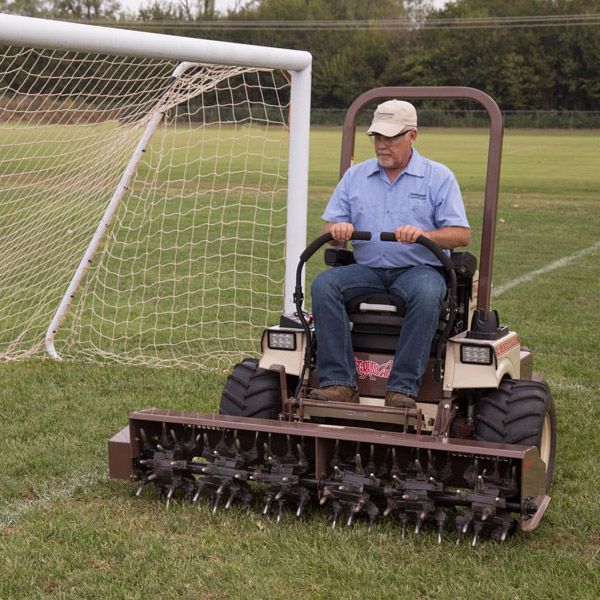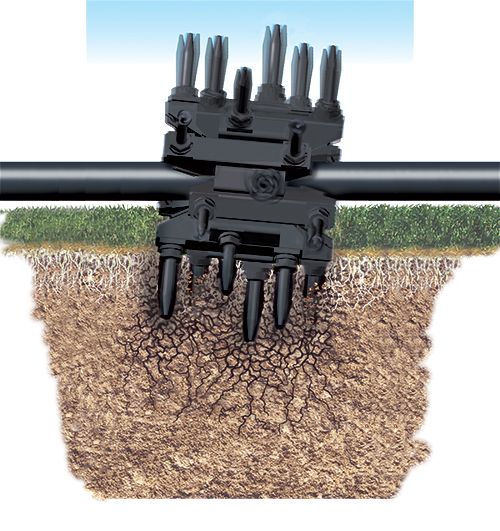Spring prep. Summer enjoyment
Posted on:Apr 29, 2019
 It’s that time of year. When lawns come to life, not only competing for yard of the year, but serving as the proverbial stomping grounds for summer fun. From impromptu soccer matches to weekend BBQ parties to the daily parade of rambunctious pets, a lawn needs to be properly prepped for all of the activity the season brings. So, whether you’re a commercial operator with a full roster of customers, or a homeowner who will contract the job out, here’s what you need to be doing right now to get that turf ready.
It’s that time of year. When lawns come to life, not only competing for yard of the year, but serving as the proverbial stomping grounds for summer fun. From impromptu soccer matches to weekend BBQ parties to the daily parade of rambunctious pets, a lawn needs to be properly prepped for all of the activity the season brings. So, whether you’re a commercial operator with a full roster of customers, or a homeowner who will contract the job out, here’s what you need to be doing right now to get that turf ready.
Aerating & Overseeding
Aerating and overseeding is an essential step in creating a lush, healthy lawn. In fact, there are four key benefits to making this part of your seasonal lawn maintenance routine:
1) You'll relieve soil compaction. This will allow better absorption of nutrients, air and water into the soil where the turf needs it most: in the root zone.
2) Aerating allows spaces for those seeds you're spreading to germinate in the soil, rather than on top of the turf or in the thatch layer.
3) Overseeding will fill in a lawn’s bare patches and help with weed control. By encouraging new turf growth, you're limiting the space weeds have to grow while improving the appearance of the lawn.
4) Overseeding with different varieties of grasses, helps lawns develop a disease and drought resistance.
Spring Into Action
Obviously, timing is everything. You want to encourage the new growth to establish well before the hotter, drier months try to undo all your hard work.
While it's best to aerate and overseed in the fall, so lawns have time to settle and seeds have time to germinate, it’s also important to do so in the spring, to encourage more growth and fill in the bare spots.
As you know, "April showers bring May flowers," or in this case "April rains encourage May lawn gains..." (yeah, we just made that up). You'll still have two months or so of cooler, wetter weather before summer arrives.
 Here’s How to Aerate & Overseed Your Lawn
Here’s How to Aerate & Overseed Your Lawn
There are two approaches to aerating a lawn: core aerators and coreless aerators. Many walk-behind aerators pull cores, or "plugs," and leave them on the turf surface to breakdown over time. This can be unsightly and counterproductive, as the cores can pull up weed seeds that have not germinated — which defeats the purpose of weed control by aerating and overseeding.
We prefer the coreless method. Here are several reasons why using a coreless lawn aerator will work to a lawn’s benefit:
1) Oscillating and vibrating steel tines deep-fracture hard, dry soils between the holes both sideways and downward, improving permeability, drainage, water infiltration and nutrient absorption in the root zone by four times that of other core aerators.
2) Additional pore space under surface provides enhanced root growth. Variable depth control ensures aeration at all levels of root zone.
3) Effective aeration with minimal surface disruption, leaves no cores to clean up and turf is ready for use immediately.
4) No slicing or cutting action to preserve delicate turfgrass roots and stimulate future growth.
Enjoy the Season Under Foot
So, there you have it. Aerating and overseeding will put your customers’ lawns in good stead as we head into summer, giving them both bragging rights and the confidence that their lawns will weather the season.
Product Recommendation:
Need a coreless aerator? We recommend AERA-vator™ coreless lawn aerator attachment for Grasshopper FrontMount™ mowers.

